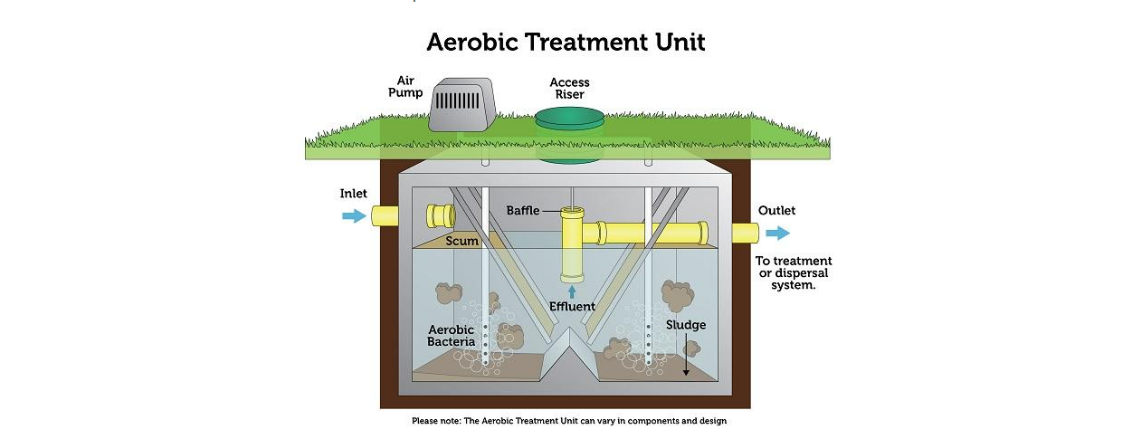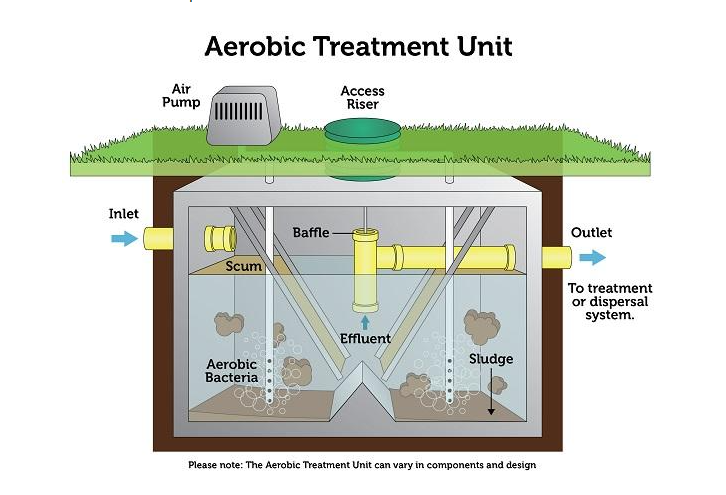March 19, 2021
FAQs About Septic Tank Aerators
If you’ve recently moved into a home with an aeration system or aerated septic tank, or are looking to install a new ATU to repair your current septic system, then you might be looking for answers about septic tank aerators.

If you’ve recently moved into a home with an aeration system or aerated septic tank, or are looking to install a new ATU to repair your current septic system, then you might be looking for answers about septic tank aerators.
An aerated septic system goes by many different names, depending on the state where you live: Aerobic Treatment Unit (ATU), aeration system, septic aerator, advanced onsite treatment unit, etc. All these are names for proprietary wastewater treatment units that have been approved by some regulatory body and use an air pump or other mechanism to inject air into the tank holding the wastewater.
Often, the septic tank aerator is the only moving part in the system. It is the true heart of the system, keeping your wastewater treated and your drainfield protected. So, you want to ensure it’s always running smoothly and is well maintained.

Keep reading for our septic aerator FAQs:
- What exactly is a septic tank aerator? An aerator, or air pump, pushes air and oxygen into your septic system. The additional oxygen increases natural bacterial activity within the system, that then provides additional treatment for nutrients in the effluent. An aerator system draws air in from the outside and pumps it through a piping network and diffuser that is inside the tank.
- What are the benefits of a septic aerator? The benefits of this system are that it can be used in homes with smaller lots, inadequate soil conditions, in areas where the water table is too high, or for homes close to a surface water body sensitive to contamination by nutrients contained in wastewater effluent. Regular life-time maintenance should be expected for ATUs.
- How hard is a septic tank aeration system to maintain? You still need to pump your tank every 3-5 years, as normal for any onsite septic system. Always be mindful of what you send into the tank with an aeration system—a great guide is the Think at the Sink brochure from EPA SepticSmart program. You also will need to repair or replace your aerator as the moving parts reach the end of their service life. Always make sure you are using genuine factory certified parts for any repairs, as aftermarket parts will void any warranties and may not handle the pressures of your overall system. The lifespan of your aerator will vary based on the size, the outdoor temperature in the region where you live, whether your in-tank diffusers need to be cleaned, and how your pump is installed.
- Which HIBLOW air pump do I need for my septic system? Please contact the manufacturer of your overall treatment system to ensure the correct sizing of the air pump for your specific unit. A professional service provider may also be able to determine the HIBLOW pump model you need.
- Where can I purchase repair kits for my air pump? We have numerous distributors across North America that can supply you with both pumps and repair parts. Please email or call for your closest or most convenient option. Make sure you are using genuine factory certified parts. Aftermarket parts will alter the performance of your air pump and it may not be reaching the pressures required for your system.
Author: Tim Smith
Contact HIBLOW for Septic Aerators!
With the help of our HIBLOW aerators, wastewater systems serving homes and businesses are ensuring that only treated water is entering the environment.